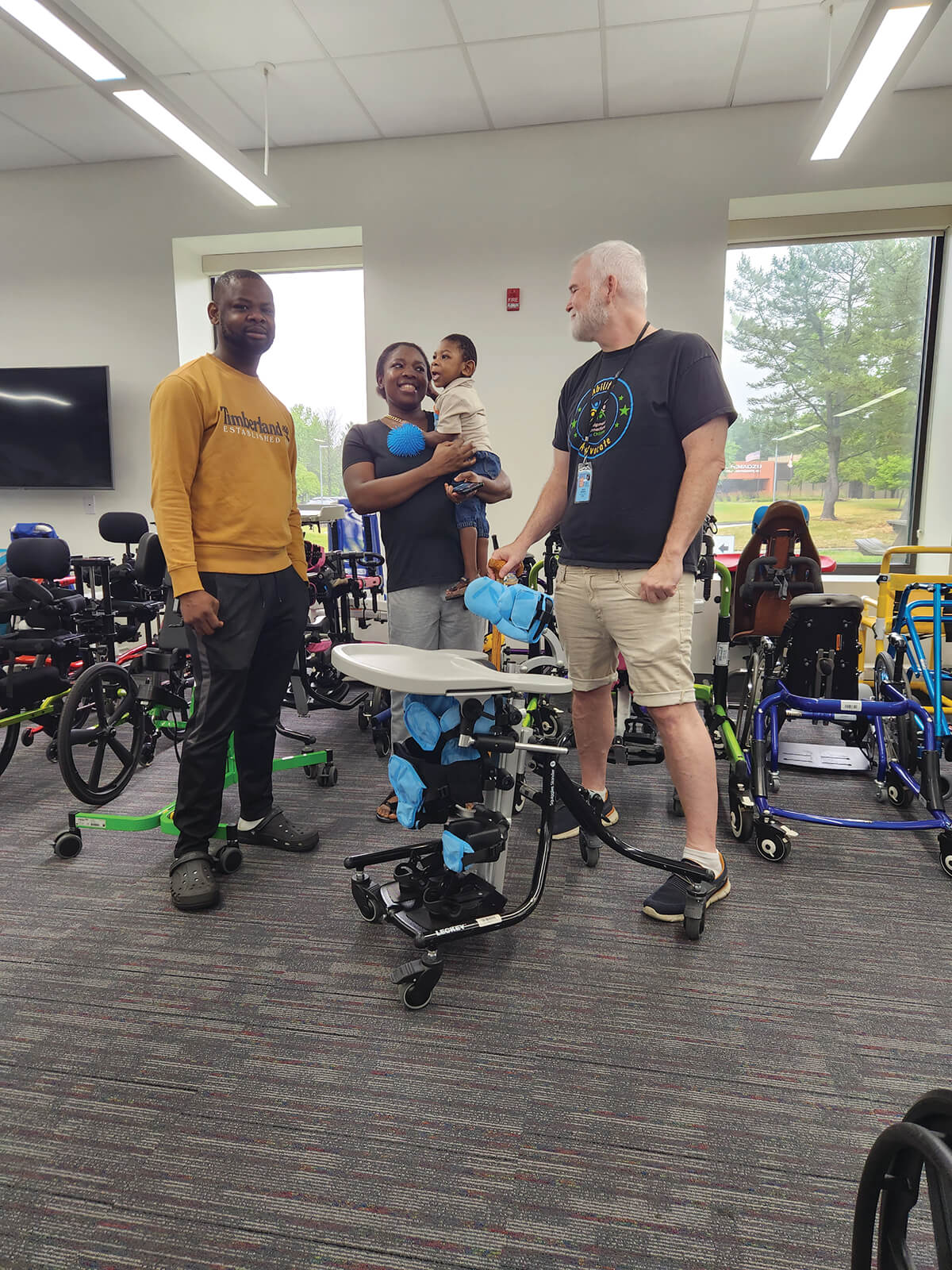GameChangers
This Local Org Provides Adaptive Equipment to Area Kids at No Cost
Last year, Equipment Connections for Children gave out more than 1,000 pieces of equipment to young people living with disabilities, saving families a collective $800,000.

Pediatric medical equipment is significantly more expensive than any other type of equipment, says Jason Herring, executive director of Equipment Connections for Children (ECFC), which provides adaptive equipment to young people living with disabilities at no cost. For example, you can get an adult walker from Walgreens for about $40. A similar device sized for a child goes for about $1,500 without accessories.
Insurance also poses many complications and delays in applying for equipment. Herring says this is a typical scenario: Insurance covers a wheelchair for a child who may not be able to walk but won’t cover things like a gait trainer and other therapeutic equipment that could potentially give the child mobility. Even with insurance, co-pays can be expensive, and there are other barriers.
Herring says it isn’t his job to judge if someone requires help paying for a device or not. “If you say you need help, we’re here to help you,” he says.
Sometimes families don’t know exactly what equipment is the right fit, so they can borrow a piece for a few months to ensure it’s what is best before they commit to keeping the item.
Herring is always looking for innovative and creative ways to serve families and has obtained funder and donor partnerships to expand the organization, which launched in 2009. He took on his role in 2019, and in 2020, he partnered with the Howard County Loan Closet, a government program that provides medical equipment to disabled people, allowing ECFC to drastically decrease expenses and serve more children throughout the state.
During the pandemic, Herring created a process to ensure everything was sanitized and families were still able to access equipment in a safe manner.
Last year ECFC gave out more than 1,000 pieces of equipment and served about 600 families, saving them a collective $800,000.
Learning from the kids is the best part of his job, Herring says.
“I’ve lived with mobility issues myself, things that came on later in life,” he shares. “The children, especially those with chronic issues, are the most resilient humans I’ve ever met. They accept reality and are ready to chug along with life. I’m constantly inspired by them.”